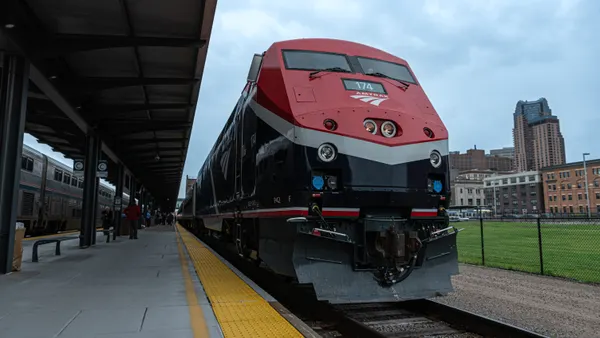Dive Brief:
- If cities are to implement successful Complete Streets policies, they need to make sure they collaborate effectively across departments and ensure those policies adapt to each community's needs, rather than a one-size-fits-all approach.
- During a webinar hosted by Smart Growth America to mark the release of the National Complete Streets Coalition’s (NCSC) rankings of the best policies of 2018, local leaders said it is crucial to take a close look at local needs. "What looks like a Complete Street in our industrial harbor is going to look different from a Complete Street next to a school or a park in a residential neighborhood," James Hannig, pedestrian and bicycle coordinator for the City of Milwaukee’s Department of Public Works, said during the webinar.
- "You throw that term [Complete Streets] out, it means a lot of different things to a lot of different people," Neptune Beach, FL Vice Mayor Fred Jones said. "For us, it's really about embracing the active lifestyle; focusing on business development, economic development and safety."
Dive Insight:
Safer streets for all users is a priority for cities, especially with pedestrian deaths continuing to climb according to projections from the Governors Highway Safety Administration (GHSA). And while there has been significant progress nationwide on implementing Complete Streets policies, more work lies ahead.
In the webinar, NCSC director Emiko Atherton said when the organization began tracking the policies in 2005 there were just 35 nationwide. At the end of 2018 there were more than 1,400. However she noted that with rising fatalities, policies to enhance safety need to be more widely implemented. "We need to do better," she said.
Getting city departments to collaborate on Complete Streets policies and how they can be embedded into tasks like street resurfacing and intersection improvements can be tricky, Hannig said. Milwaukee formed a Complete Streets committee with the relevant department heads, chairs of city council committees and community representatives to try and break down those silos and collaborate on developing and implementing new policies. It is an initiative the city borrowed from Baltimore, and Hannig said it has been effective in "helping all these city departments get on the same page and really prioritize the importance of Complete Streets."
Caressa Givens, Milwaukee Community Projects Coordinator with the statewide nonprofit Wisconsin Bike Federation, said committees such as that one as well as getting more people involved in the process helps build a "community coalition," and those differing viewpoints help city leaders see where some streets have different needs, but also where there are shared values around safety.
Jones said while it can be difficult in car-centric communities, there is a willingness for people to work together, and soon "everybody's really drinking the Kool-Aid and on the same page."












